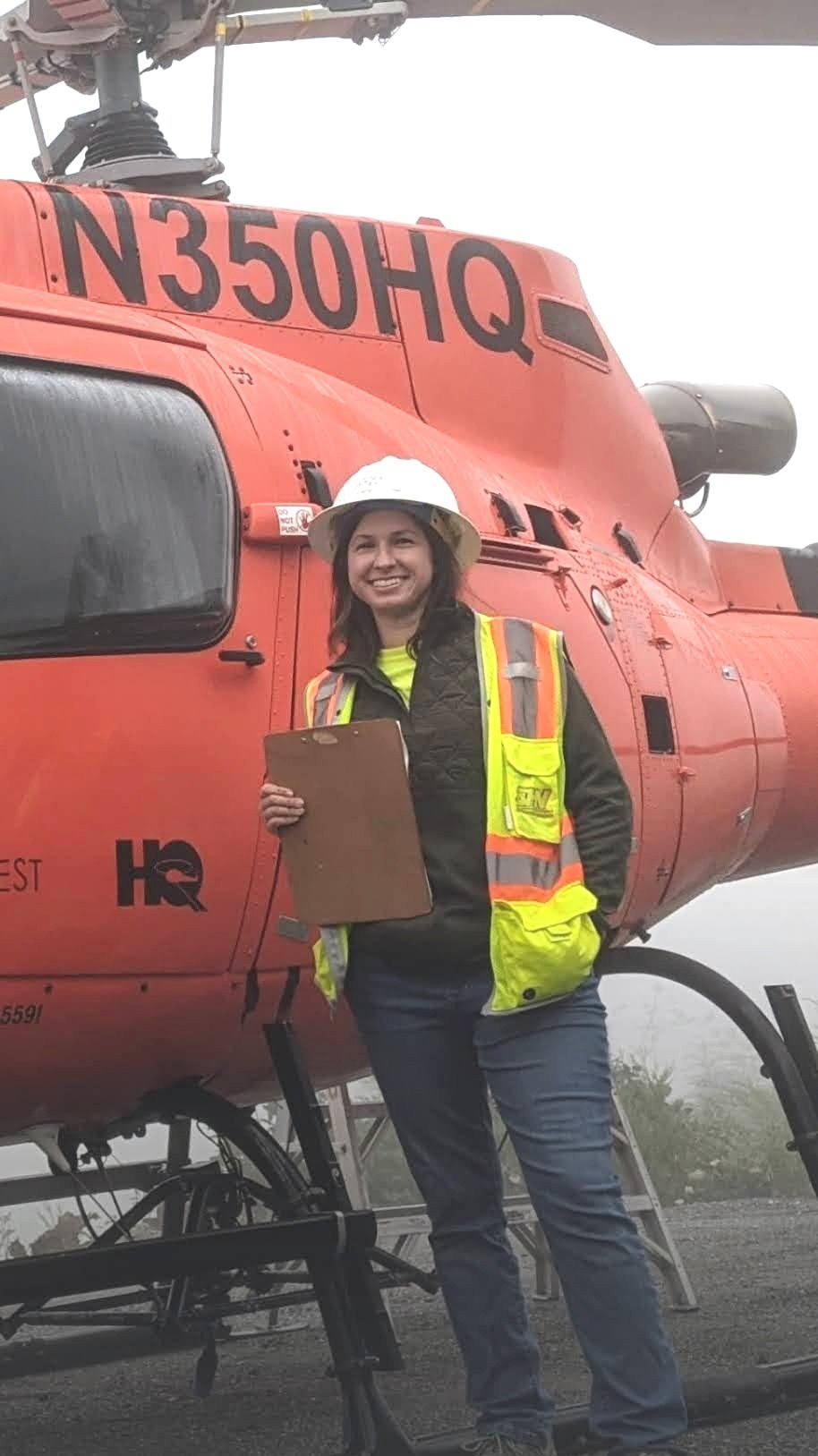Fault Line Junkie
Editor’s Note: Christina Tipp is being profiled as part of our ongoing “She’s Got MOXY” series, wherein readers complete a form telling us why we should feature a particular woman in infrastructure. Dave Gonzales, laboratory manager and construction materials testing technician at SHN, nominated Christina, a project engineering geologist at SHN. He wrote, “Christina has been a great mentor and positive example for our new hire female geologists and inspectors. Christina is very well respected in her industry; she has taken part in technical podcasts and presentations regarding geohazard and geotechnical science. She is very strong in her technical background, and leads her team with mentorship, patience and respect.”
This is her story.
Christina admits that she is always down to jump into a fault trench to scour the area for fault lines. She considers herself lucky to have seen a splay of the San Andreas Fault in a fault trench, as well as a thrust fault (Monta Vista Fault) and the Maacama Fault. “I’m easily excited by fault lines, landslides, and road cuts into bedrock! In fourth grade I had already decided I wanted to be a geologist when I grew up. Although I never had any geology classes until college, I think my interest was piqued during the camping and road trips my family went on.”
A licensed engineering geologist, Christina grew up in the Mojave Desert (Lancaster, Calif.), which is adjacent to the San Andreas Fault and Garlock Fault, so earthquakes for her are old hat.
“The best part of being an engineering geologist is being able to do field work and geologic mapping and then heading back to the office to write up all my observations and providing advice to stabilize an area or how to prepare an area to build on,” she shares.
Preparing geotechnical or soil reports and geologic hazard reports are the projects she does most, but since moving to SHN in northern California she has been able to apply her geologic knowledge and expertise to a wider range of infrastructure projects that have a geologic component. These include fish passage projects, rural road design, timber harvest plans, on-site wastewater systems as well as supporting Caltrans and cities with public safety of roadways.
Now about 15 years into her career, Christina has taken many opportunities to train staff level geologists and engineers. She says she enjoys sharing her knowledge and helping colleagues come into their own.
“Work is far more enjoyable as a team so I think it is important to train your team, get members engaged with projects, give them space to ask questions, and show them you will support them on their career path,” Christina adds.
Certainly, she has coached far fewer women. “There are definitely more women in STEM classes in college these days, but a lot less in the industry. Even fewer on construction sites,” she says. “With proper training, shadowing, and communication we can provide a supportive work environment to train more women and give them the confidence to deal with difficult site conditions and also difficult personalities. Those are the two biggest issues I’ve seen on job sites that can sway women from joining or staying in the industry: lack of experience and support when sent to a project and dealing with the difficult personalities.”
This is where having MOXY comes into play. “I think it [MOXY] means you are someone who has worked hard to get to where you are, which has helped you build character,” says Christina. “You’ve persevered, are smart (whether book smart or street smart), and have made your own path. To have MOXY means there is an edge about you and, chances are, others have noticed it too.”
Do you know a woman with MOXY? Complete our quick form here for a chance to see your nominee featured.


